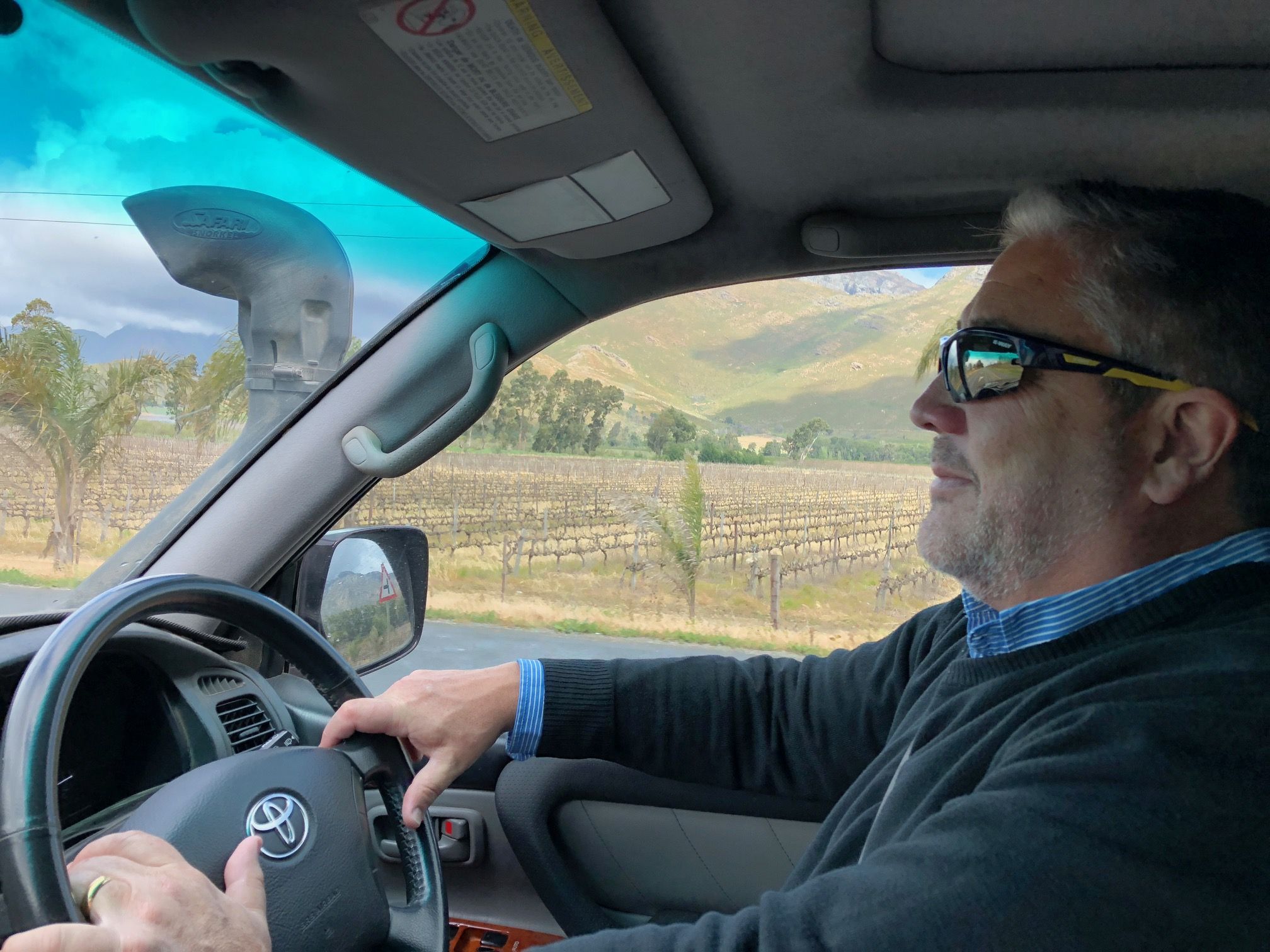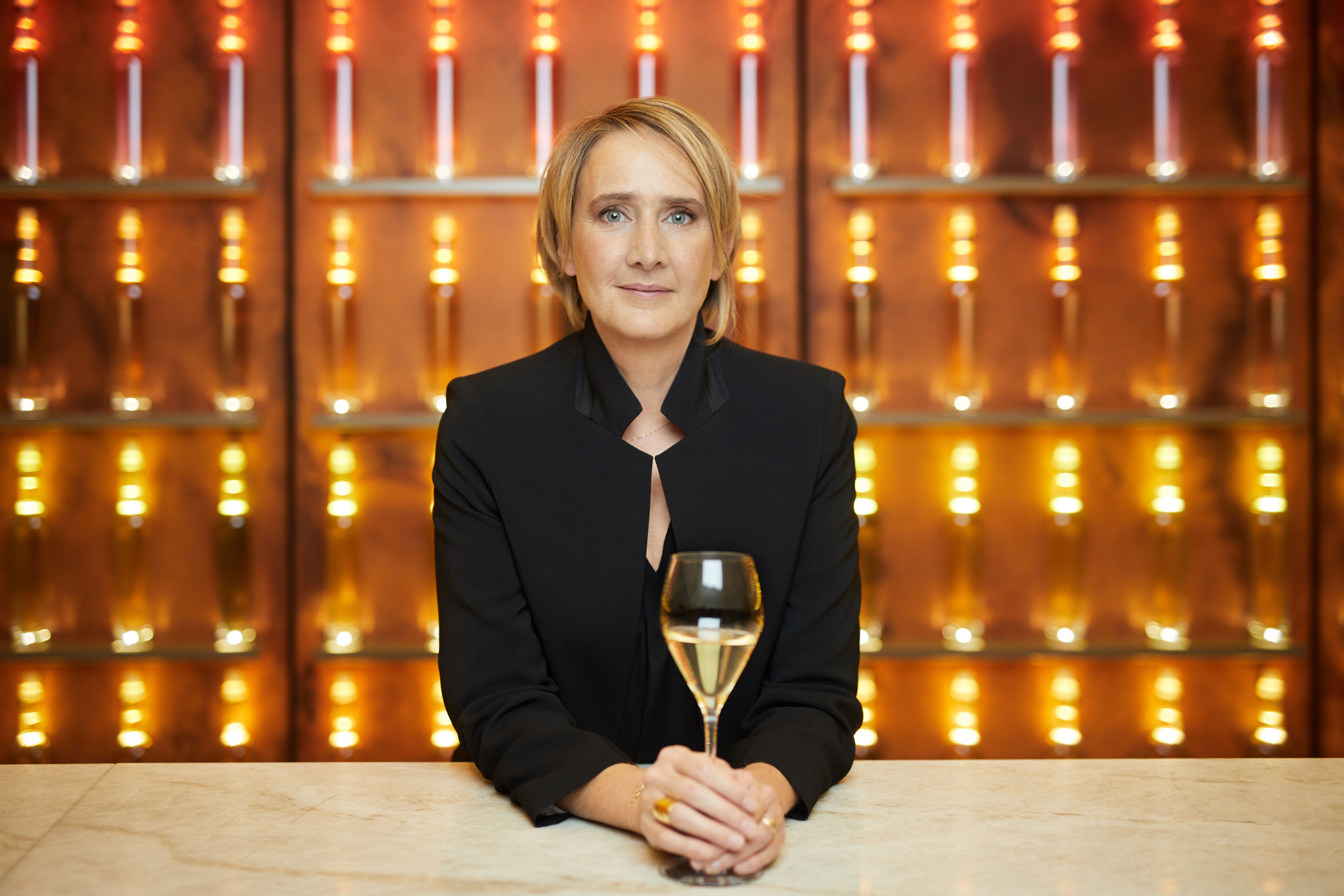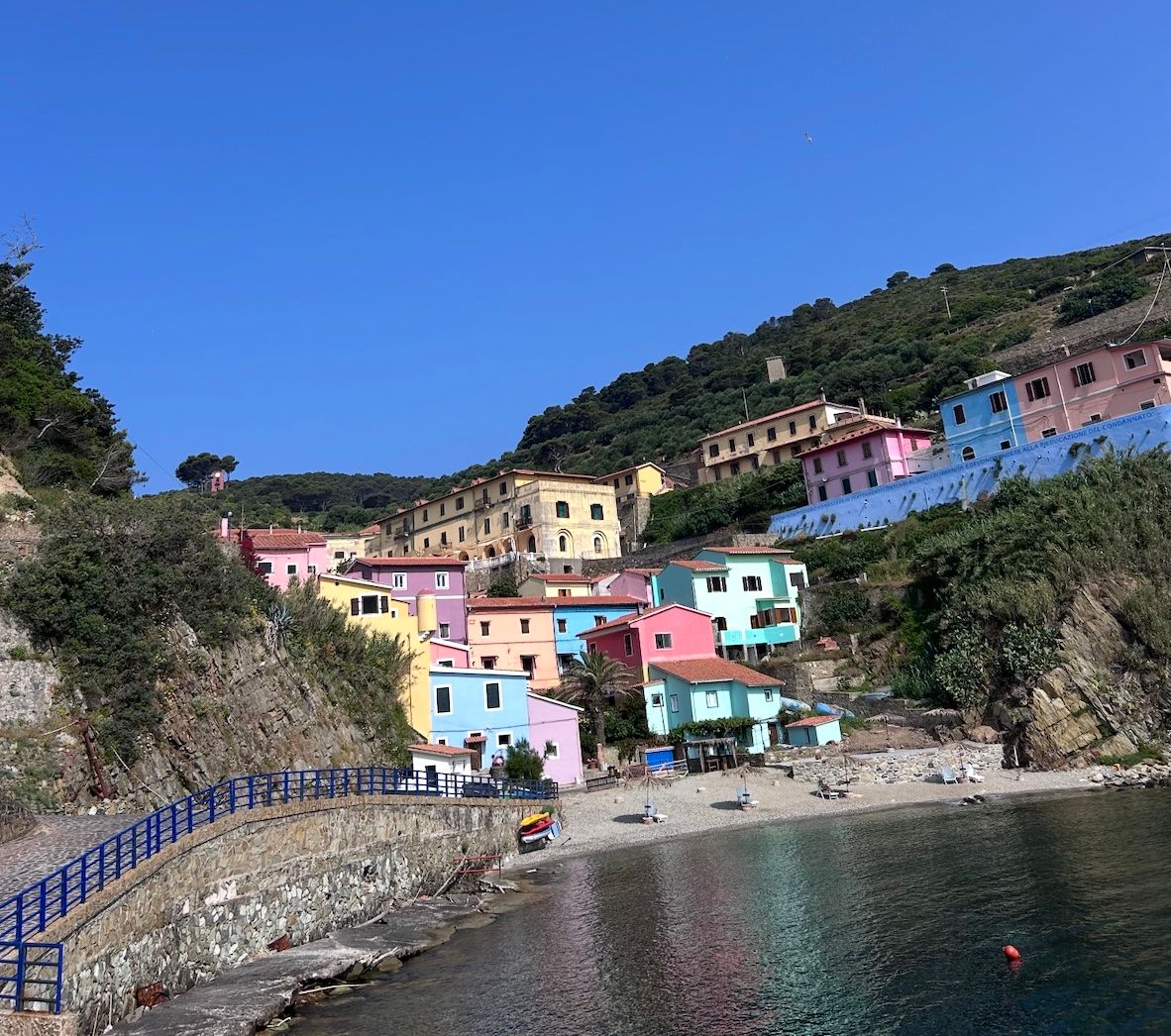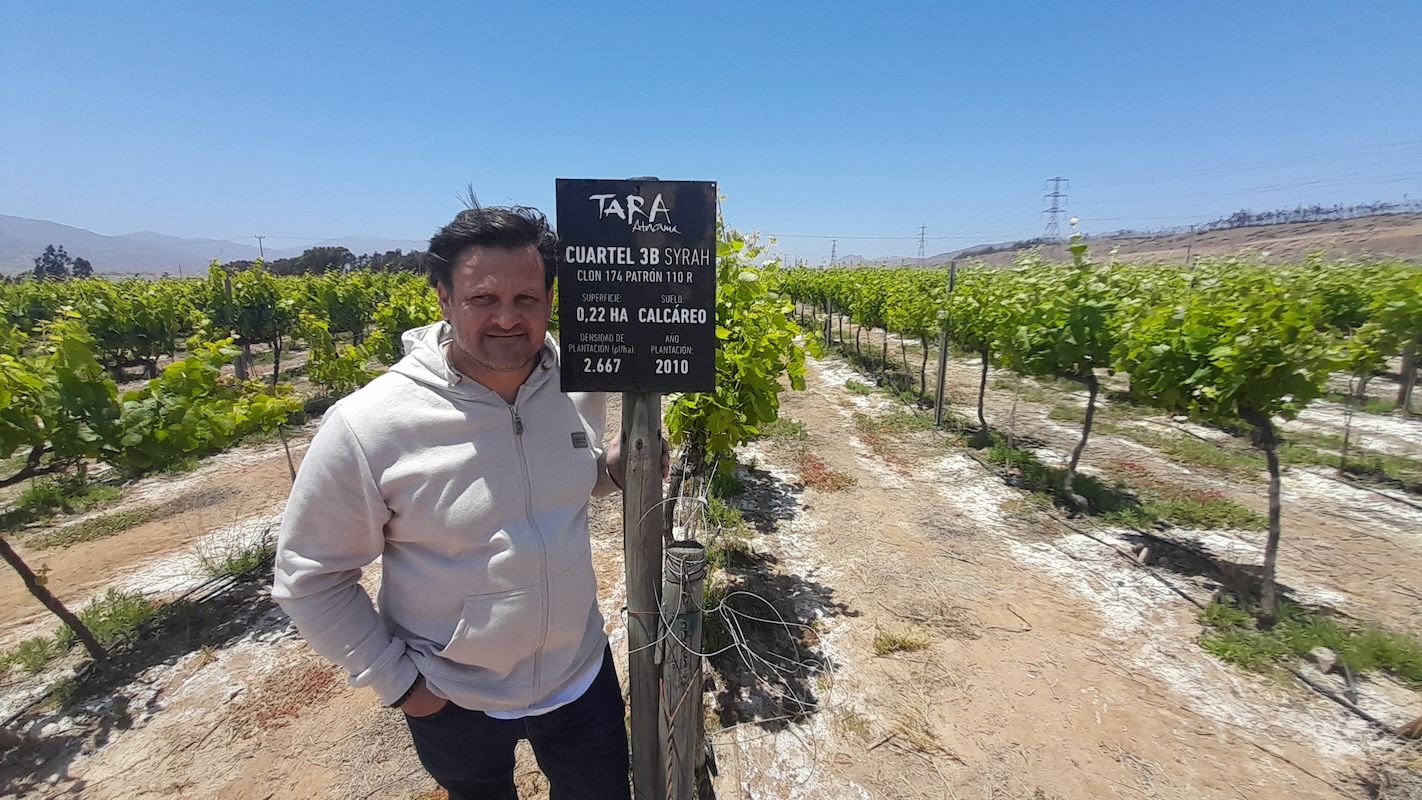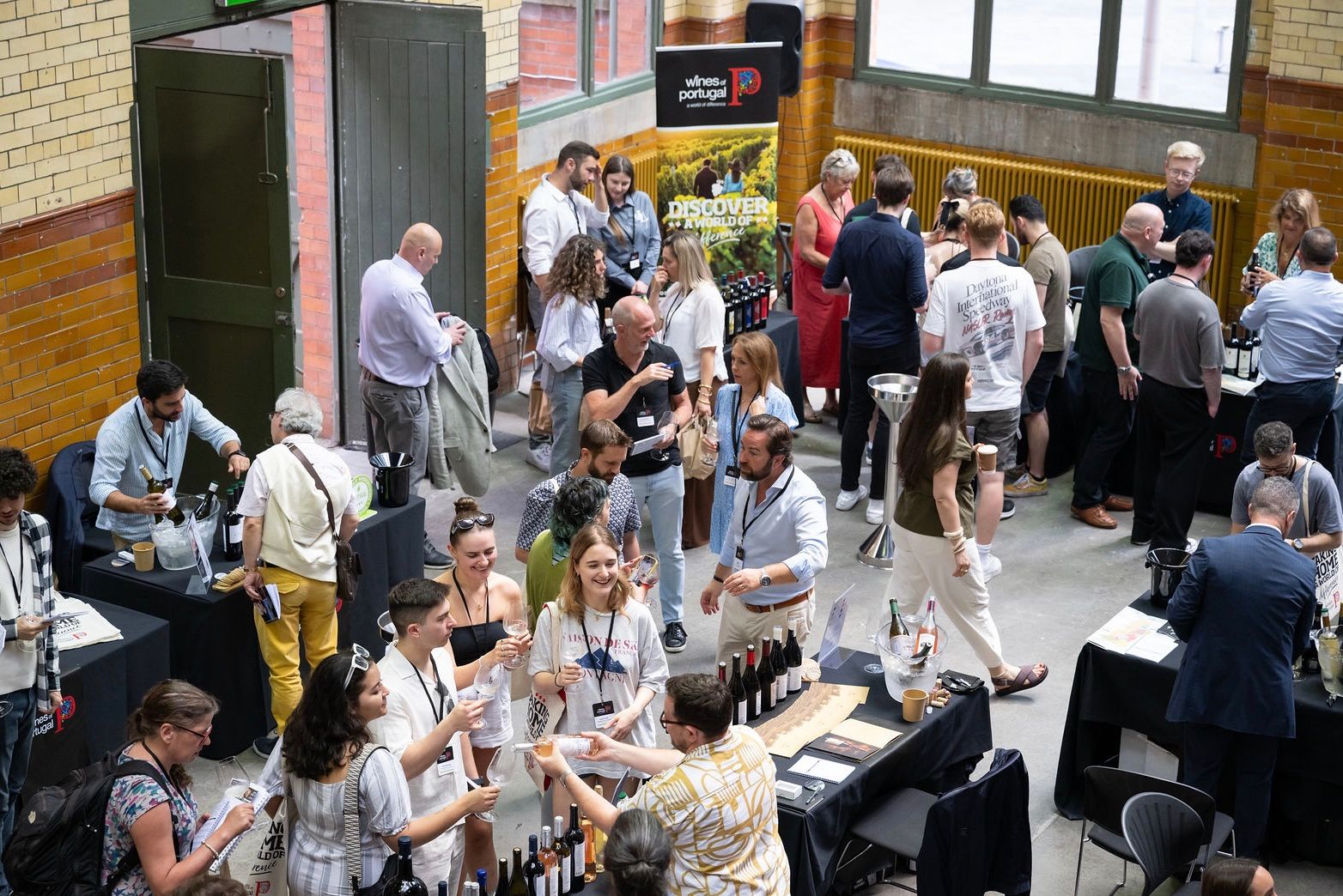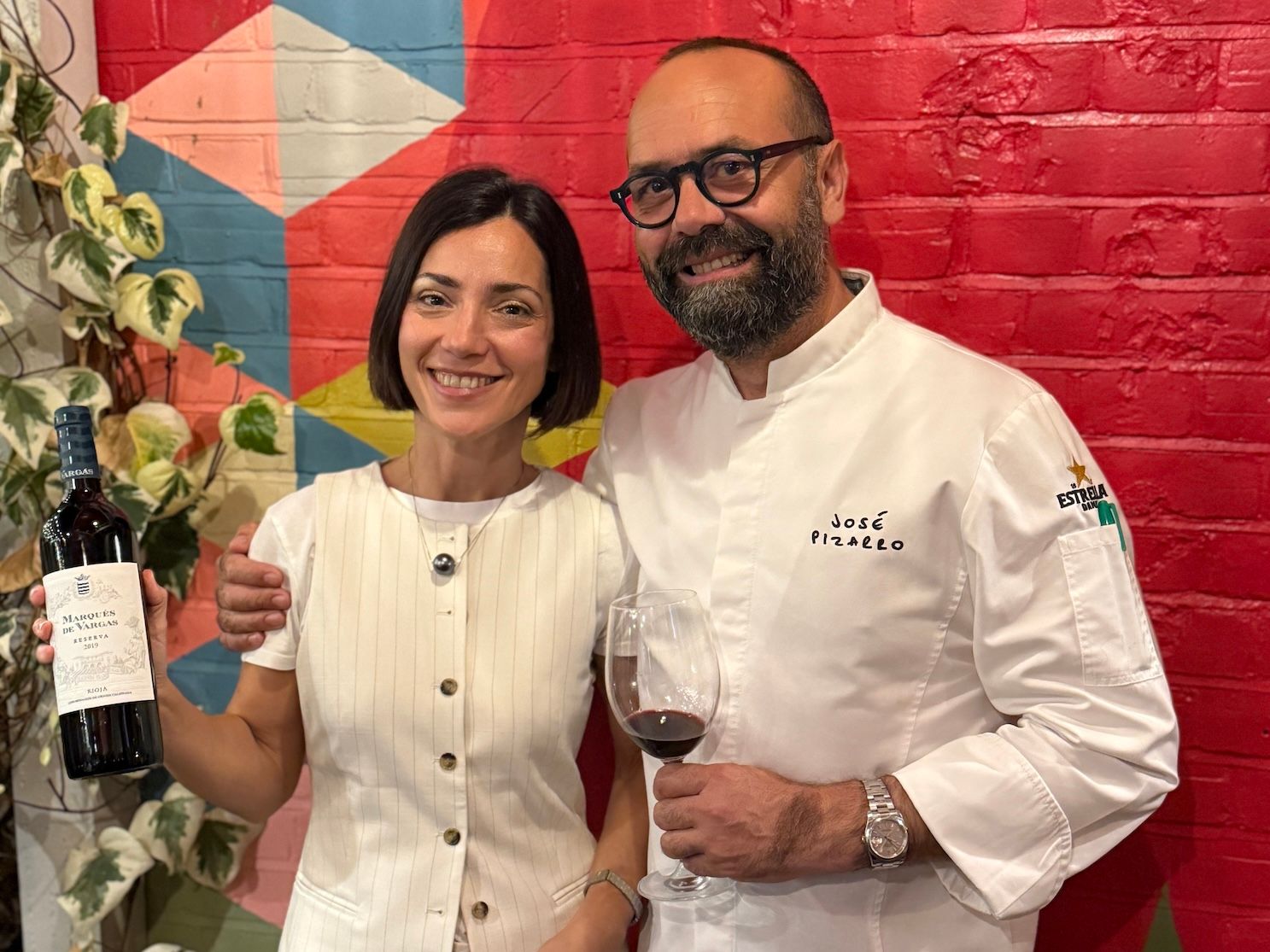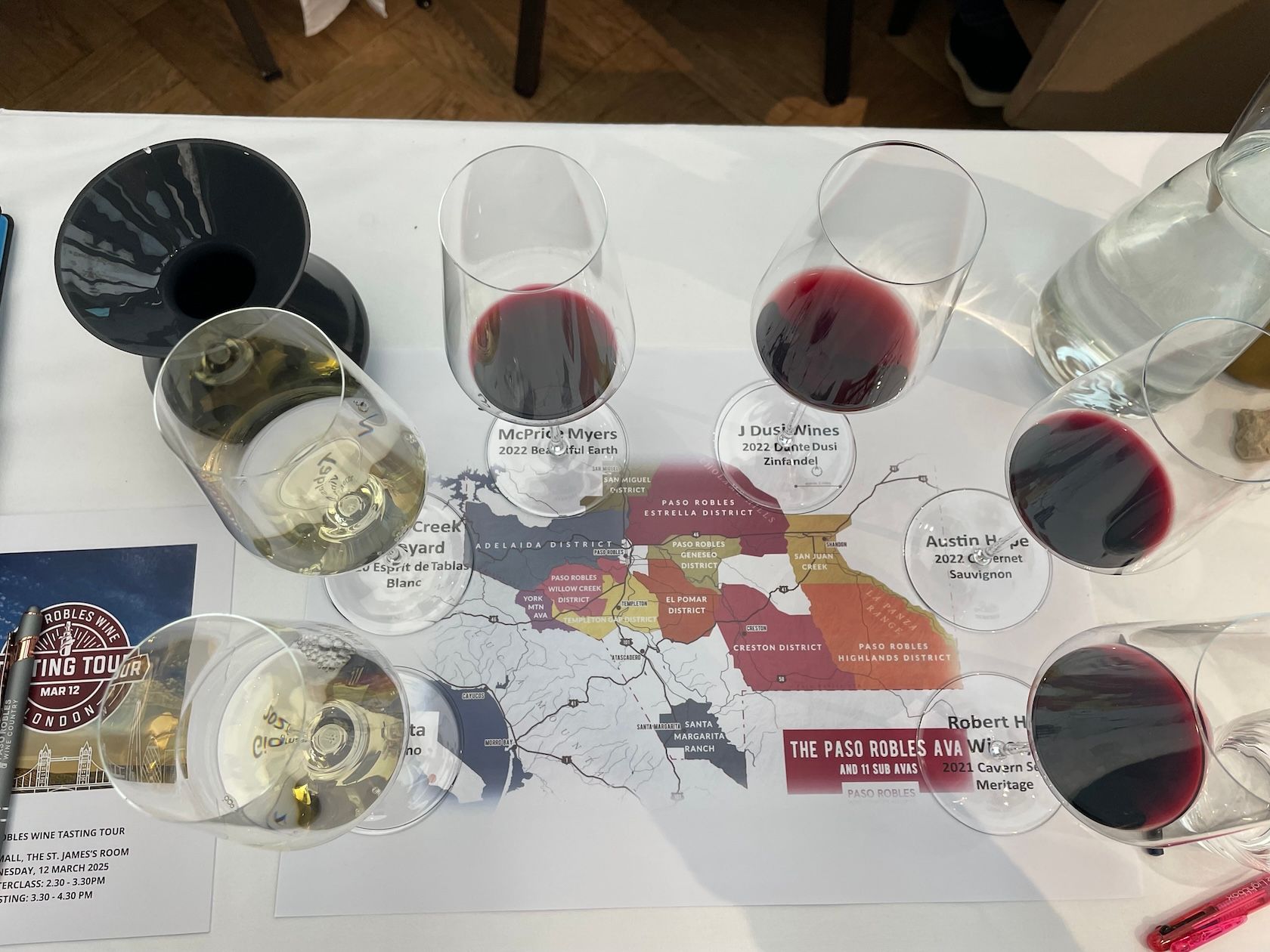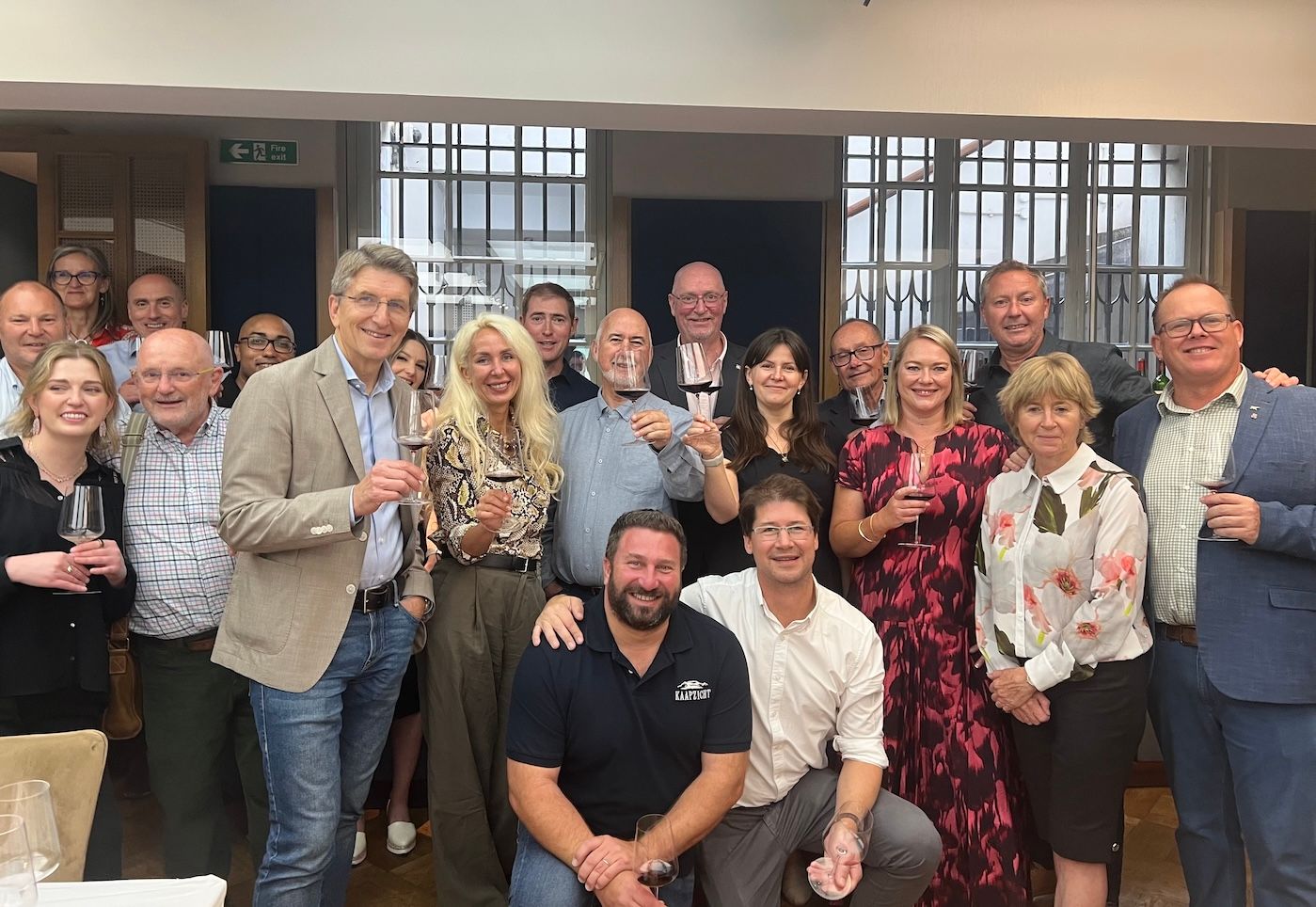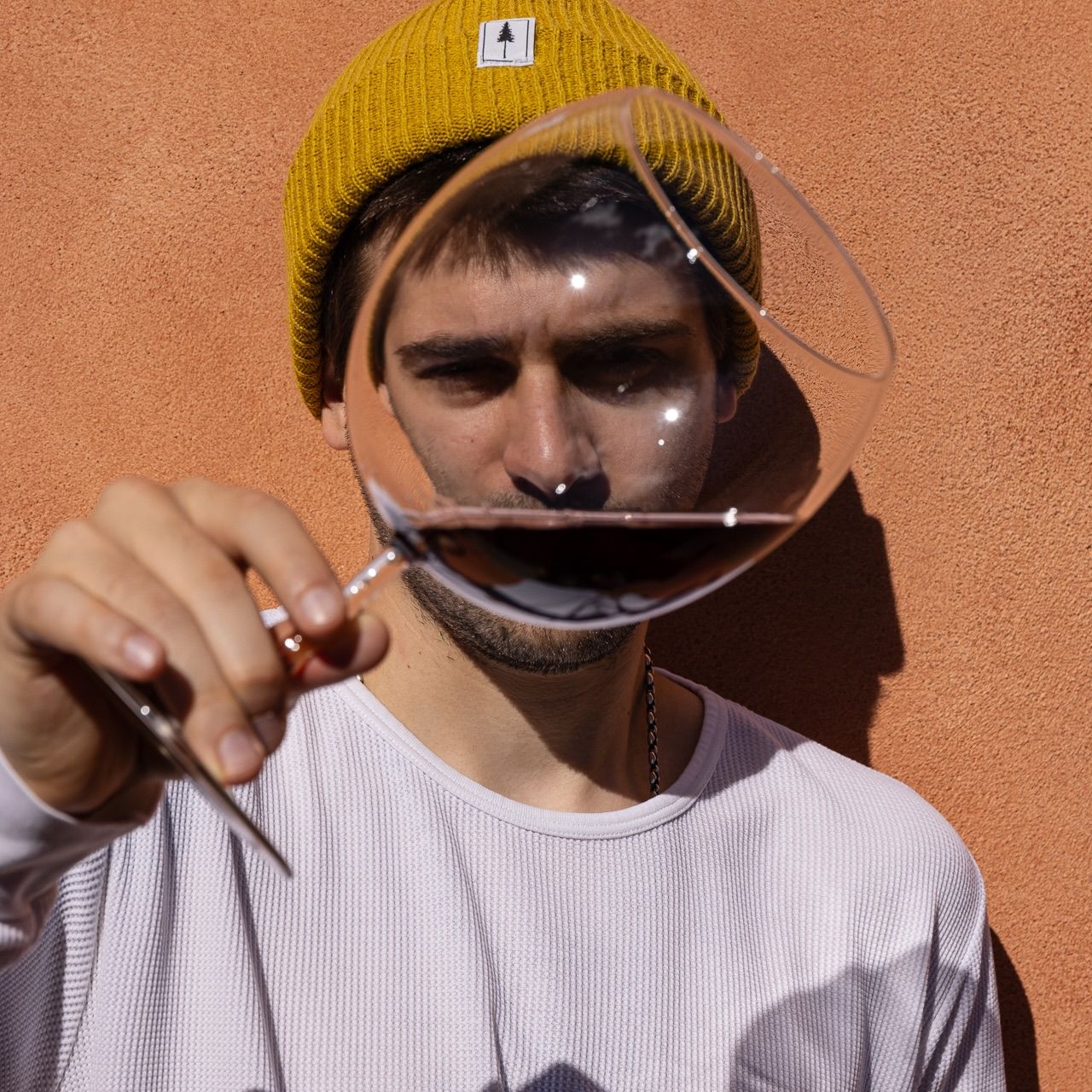Rascallion Wines does not just believe in South African blends, it believes in blends full stop. Which is why it is looking to introduce further wines down the line using blends from different countries. But first things first…

If you could only sum up what makes South African wine industry famous in less than 10 words the chances are Chenin Blanc and Pinotage, the two classic varietals grown in the region, would make up three of them.
You could certainly make a case for a number of other varietals, including Chardonnay, Sauvignon Blanc, Syrah and Cinsault, and the world class wines that are now being made across the Western Cape from those world famous grape varieties.
One word that might struggle to get into most people’s Top 10s would be ‘blends’. Winemakers might talk about their Bordeaux and Rhone-style wines, which essentially are blends, but it is not blends per se that they are necessarily championing.
Blends are best
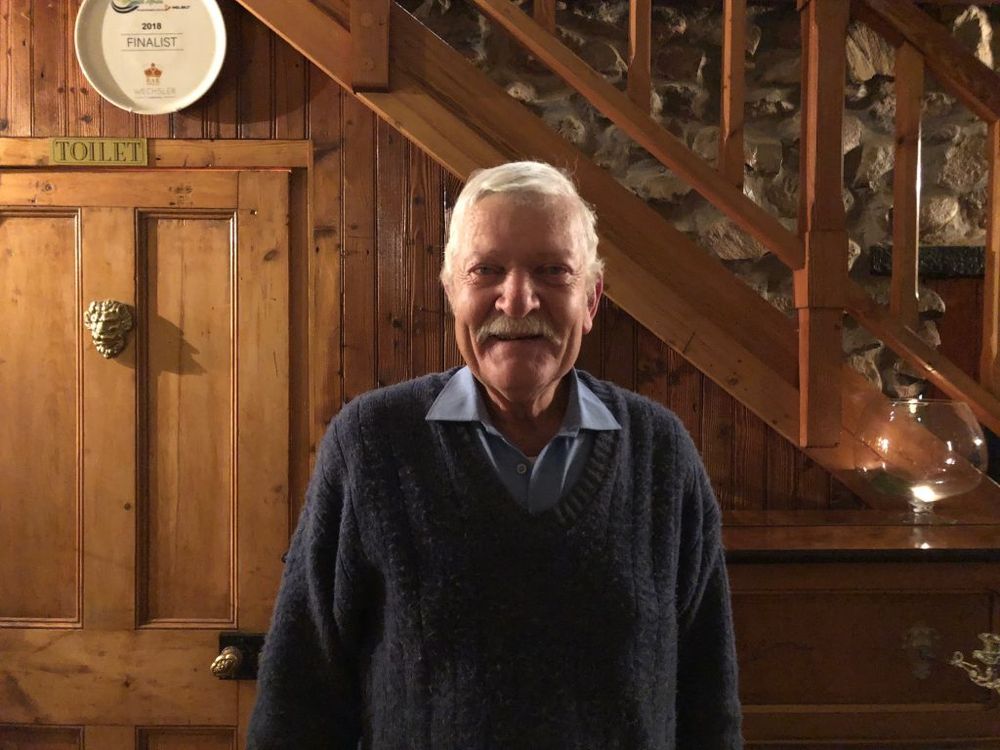
Professor Eben Archer believes South African blends will produce the country’s best wines
Which, according to one of the country’s most respected and acclaimed viticulturists, Professor Eben Archer, who has worked with most award-winning producers in the country, is a major oversight, and great pity.
I was fortunate enough to share a dinner with him during my recent visit to South Africa and you would struggle to meet anyone who is more passionate, engaged, enthused and motivated about what is happening in his country.
For him blends are what South Africa should be all about. “Blends are the future for South Africa,” he claimed. “The only way you can get both complexity and quality is with blends.”
In his view “a blend will always be better than a single variety”. “If South Africa truly wants to kick the arse of the world with its wines, it will be with blends not single cultivars,” he added.
But you have to make sure every component part of the blend is at its best. “Each cultivar has to be immaculate or it won’t work. It’s like a piece of poor floating in water.”
Get your blend right and you can sit back and watch it evolve and age, rather than be desperate to get your wines out and drunk young.
It also makes far more commercial sense for growers and producers to work with blends than single varieties. “You can change your blend to move with the vintage you are having,” explained Archer.
So if certain varieties suffer in one vintage you can adapt your blend accordingly, he adds. “If you are relying on just that one single variety and the harvest goes wrong, then you’re knackered. You might make a great wine one year, but what about the next one? With blends customers and consumers can get used to your wine and expect to drink it every year.”
Typically for a South African he relates the blended story to rugby. “Only by playing as a team can we beat the rest of the world. If we play on our own we will drop the ball and get beaten. The best blends are the best varieties put together to create a winning team,” he said.
“We should also not be calling them a Bordeaux blend or any other French name. We are South Africa and we have something special here.”
The Rascallion way
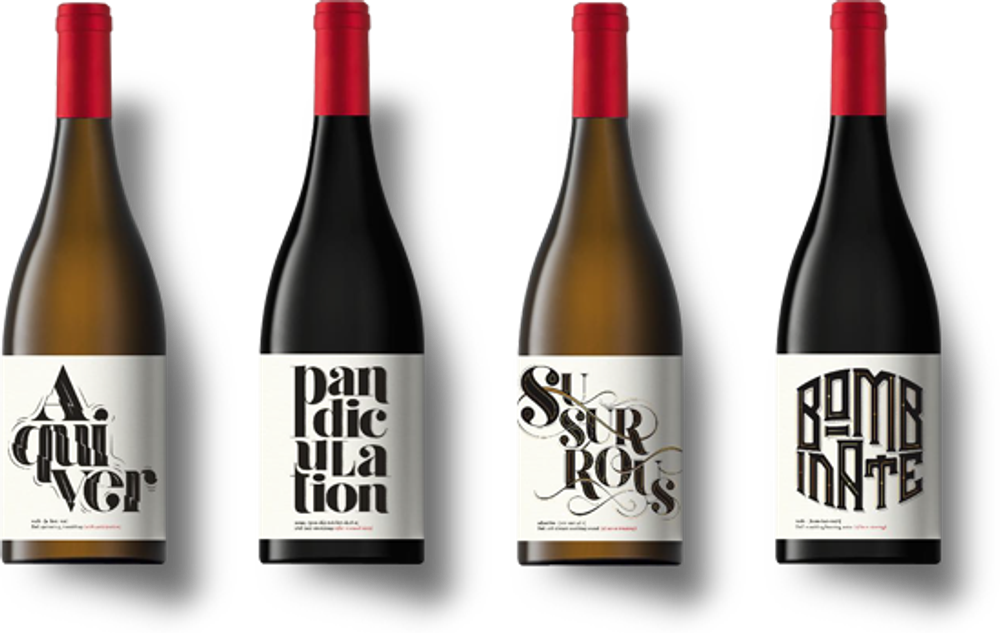
The Rascallion range uses left field words to help stand out on shelf
All of which was music to the ears of one of the other dinner guests, Ross Sleet, who after a number of years working with various major wine businesses, from Constellation to Distell, Kleine Zalze and DGB, is looking to do things very differently, with a new start-up business, Rascallion Wines, that he has set up with his business partner, David Kretzmar and his family, owners of Broad Valley Wines, in the Overberg region.
The reason Sleet spent most of that evening open mouthed was that everything Archer said is what Sleet is trying to achieve with Rascallion Wines. A brand based 100% on blends. It could almost have been scripted.
The strapline for Rascallion is deliberately provocative: “This is not a wine”. It might also, to be fair, be a little misleading, as clearly it is very much a wine, and in Archer’s view the ultimate of what South Africa should be looking to produce.
After all it is completely logical, following Archer’s thinking, that a wine that is made from the perfect component parts of two to three varieties at the very top of their game, is going to be more interesting to drink than the single expression of one grape variety. After all Bordeaux hasn’t done too badly with the same approach.
Experienced approach
Sleet has brought all his years’ experience of working across a number of major South African wine brands to bear with Rascallion Wines. Literally so in the bear mascot figure, ‘The Rascal’, that appears on all the labels and will act as the central, recognisable figure for the brand as it hopefully develops into new areas.
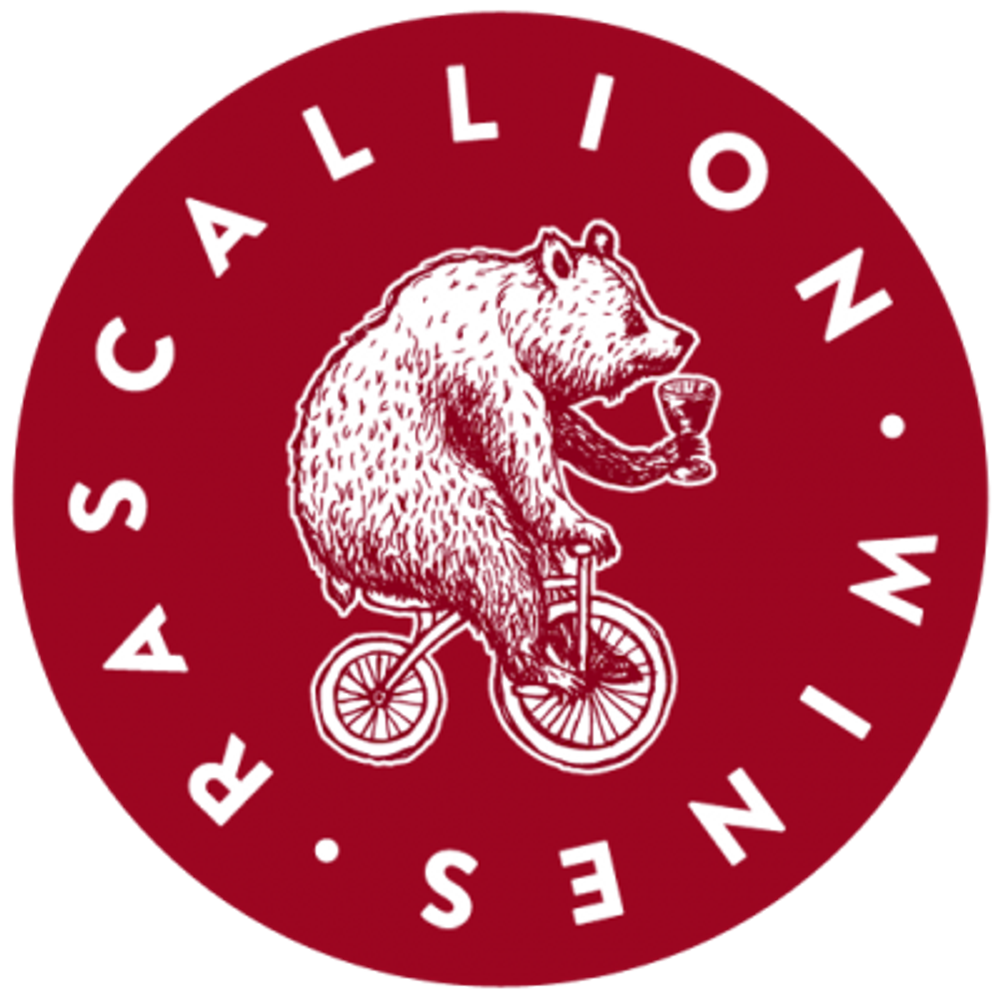
For whilst Rascallion is starting life with South African blends, its ambitions are far more international than that. In time we can expect to see Rascallion blends being created from different countries, with Spain mostly likely next on the agenda. As Sleet explains: “Rascallion is a négociant wine business. We don’t own any vineyards and work with various winemakers to create wine blends that reflect the character of the regions where the wines originate.”
First things first, though, and the Rascallion Wines team is gradually building up and introducing the brand to key export markets, with the UK very much on Sleet’s radar. The recent Cape Wine exhibition was clearly the ideal opportunity to look to open doors and get those conversations started.
But Sleet is also very aware that to have any credibility overseas it is important for Rascallion to be successful and respected in South Africa and Africa as a whole.
It is why the bulk of its initial distribution efforts have been in getting the wines listed in key, influential wine merchants in South Africa, in Cape Town, Johannesburg, Pretoria, and Durban like Norman GoodFellow, Wine Concepts, and others.
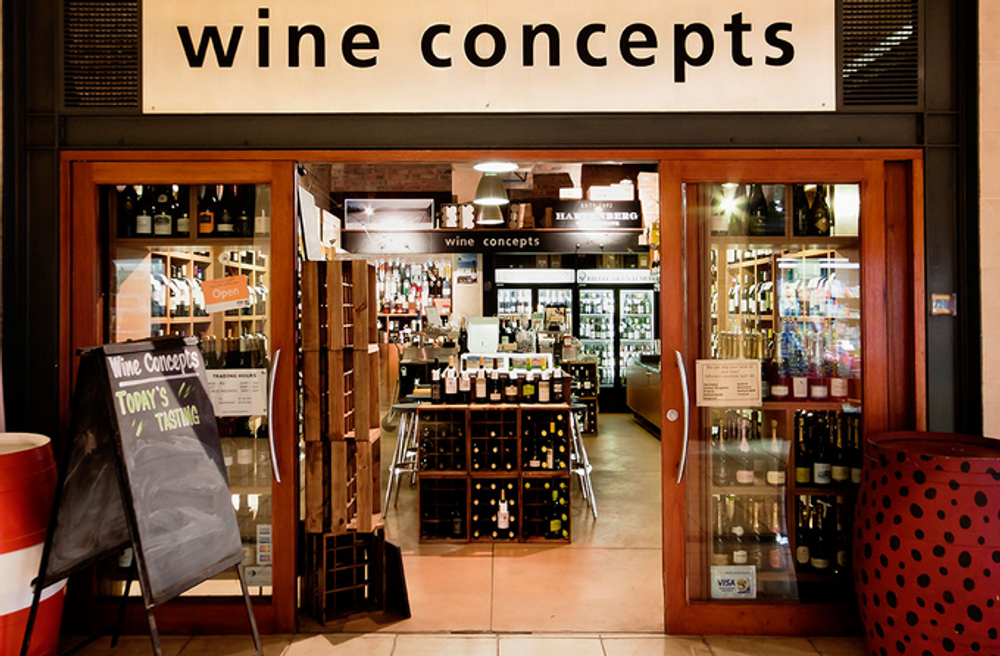
Influential stores like Wine Concepts in Cape Town are listing Rascallion Wines
As Sleet explains: “We are steadily building our national footprint in South Africa and now have representation in the Western Cape, Gauteng and KZN (KwaZulu-Natal) with a number of national listings in the on-trade and some national retailers.
Africa first…
Sleet is passionate about the South African wine industry supporting its own markets in Africa rather than always first looking for international success. He speaks with experience having worked with a number of wine brands looking to build their African network, like the Cape Legends range from Distell and then specifically when he spent time working with Tanzania’s premium wine business, MMI Tanzazia, opening up wine channels in interesting and glamorous wine markets like Zanzibar and the country’s major safari parks such as the Serengeti, Ngorongoro and others.
Having a strong local network of contacts, growers and producers is also vital in how Rascallion is able to source wines from different terroirs across the country, said Sleet
My recent visit included a three-day road trip with Sleet up and out to many of the major bulk wine growing regions from Swartland, Breedekloof, to Robertson and McGregor meeting and talking to the major co-operatives along the way.
Blending in action
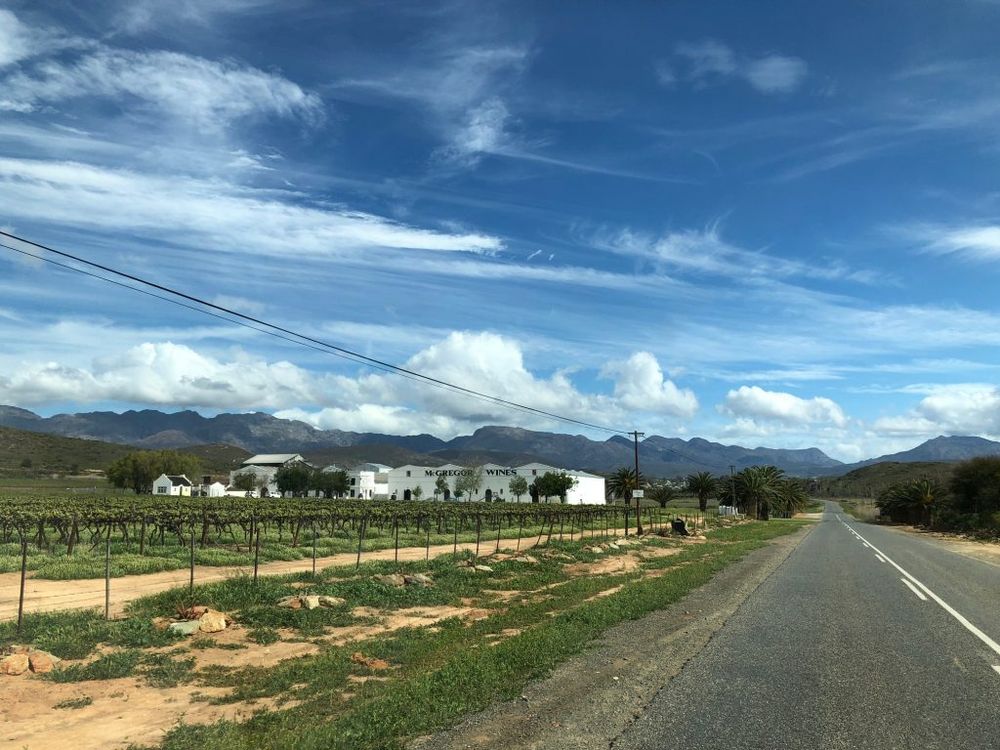
McGregor Wines has helped Ross Sleet and Rascallion Wines source the right wines for some of its blends from the McGregor region
McGregor Wines, for example, is working with Rascallion Wines to help blend two its new wines from the McGregor area of the Robertson region. The range consists of a Chenin Blanc dominated blend (a Rascallion favourite), and Merlot, Cabernet Sauvignon blend.
Jacques Joordan, executive manager, of McGregor Wines said those particular tank samples had been chosen for the blend because of the different fruit, flavour and aromatic characteristics they bring to the wine. The Sauvignon Blanc, for example, having being sourced from a grower higher up in the mountains, where the climate is a little warmer, the Chenin Blanc from the top end of the valley, whilst the Chardonnay came from the central valley floor.
“South Africa has such different soils and influences, be it from the sea, the mountains, the dry lands, or river irrigation. So you have to travel around to see all the diversity there might be just in one region,” explains Sleet.
“Even in a major bulk area that will be so many differences in the wine being made due to the terroir and topography of the region.”
Joordan said being able to work with so many growers, which for McGregor Wines means 26 different farms, it is able to source the right kind of fruit. “We need to get to the style that Ross wants, so it is a case of tweaking and blending to get there. The art of being a good blender is always looking to make something special.”
In the end the combination of the three white varieties gave Sleet the “mouth feel, minimality, fresh acidity and freshness” he is looking for.
Market focus
Sleet’s international experience trying to sell South African brands around the world potentially gives him an edge on how to introduce Rascallion Wines to different markets.
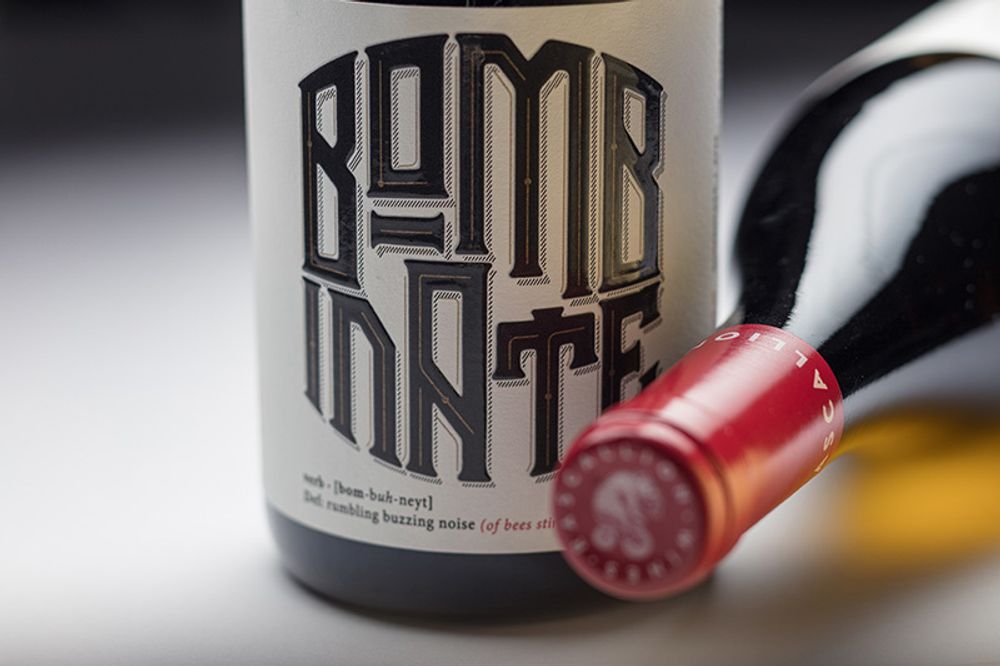
“Every country,” he says, “looks at your wine in a different way. In the UK they look at price first and then the wine. In Japan it is the story first, then the wine. Scandinavia is all about the wine. The US is a mixture.”
Rascallion is starting to make good inroads in its initial target markets. “We are exporting to Sweden, and Hong Kong, and have pending orders for Canada, Australia and the US which should ship before the end of the year. We have also appointed agents for the Indian Ocean Islands and West Africa and hope to expand our network to Asia early next year.”
Rascallion Wines is also very much about the label and the branding. Each wine is given a particular name that might earn you a lot of points if you were playing Scrabble, but might not necessarily slip off the tongue. They are designed to challenge and make you want to pick up the bottle. They are also made to last with cellar ageing of five to 10 years.
So the current ‘Word Collection’ with fruit sourced from around Stellenbosch includes Aquiver, a blend of Chenin Blanc, Grenache Blanc and Sauvignon Blanc; Susurrous, wooded Chenin Blanc and wooded Grenache Blanc, and Sauvignon Blanc; Bombinate, Shiraz and Grenache; and Pandiculation, also Shiraz and Grenache.
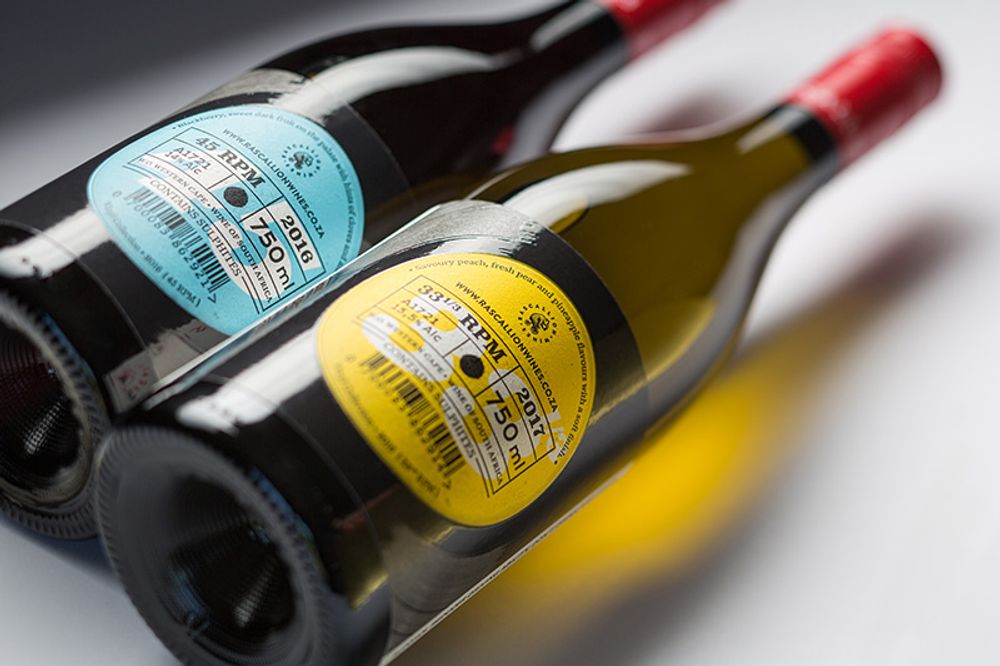
A wine to sit back and relax to your favourite vinyl
Rascallion then has the separate Vinyl Collection – 33 1/3 RPM (Chenin Blanc, Rousanne, Grenache Blanc, Viognier and Verdelho) and 45 RPM (Grenache, Cinsault, Mourvèdre and Tannat) – which is very much as it stands with an image of a vinyl record for a wine label. Here the grapes are sourced from the Piekernierskloof region of the Swartland.
Sleet works very much on the premise that you bottle has to stand out on shelf from 10 metres away, if you are three metres away that draw you to the shelf and then one metre away you will pick it up.
It’s then up to the blend inside the bottle to convince you to buy another.
